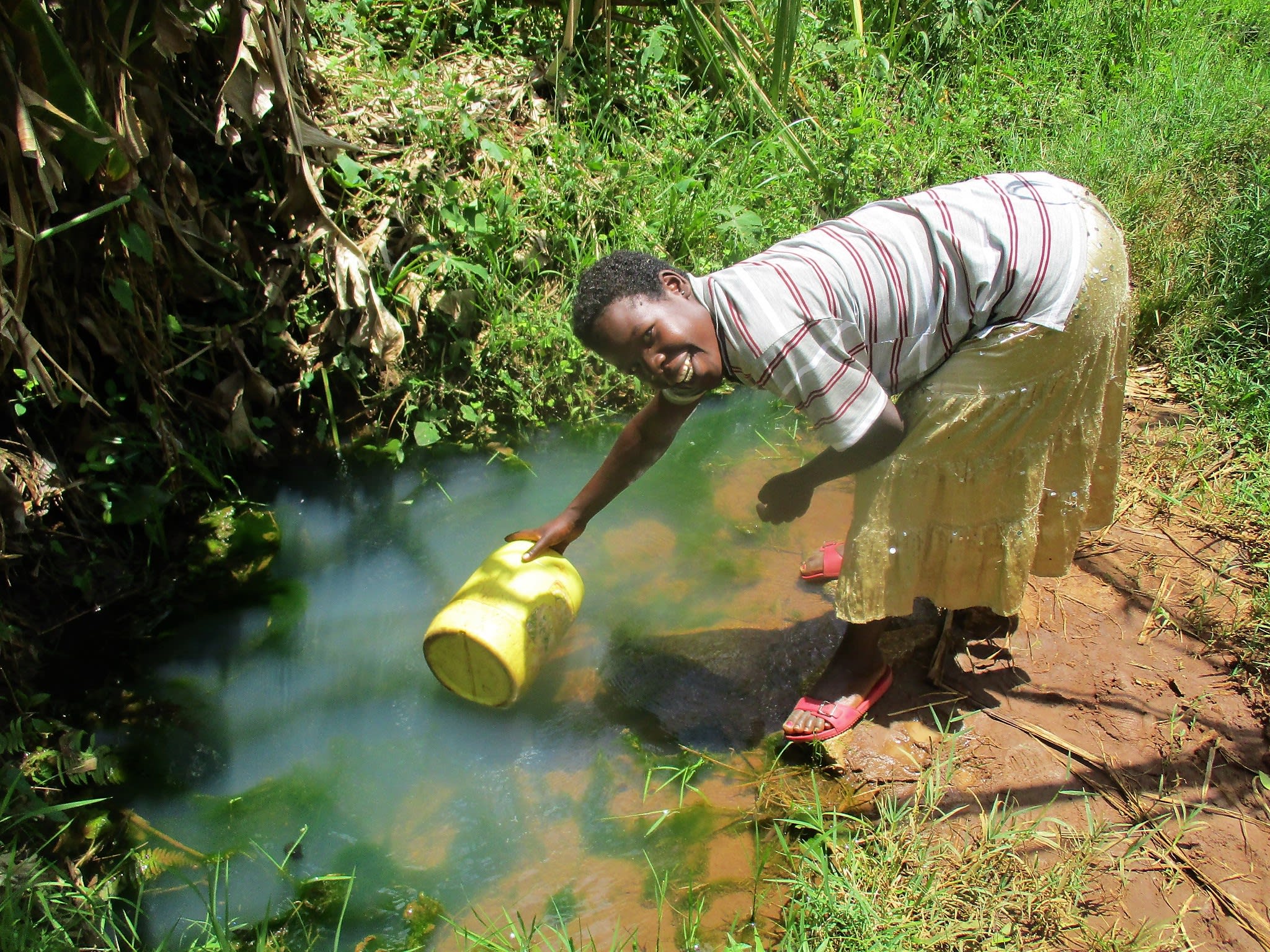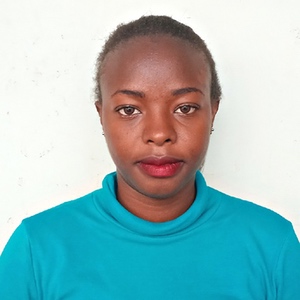Jeremiah Mashele Spring is situated in Shirugu Village of Kakamega County. The village is inhabited by the Kabaras people of the Luhya tribe.
The people of Shirugu Village wake up every morning to go and fetch water from the spring. Afterward, they partake in various agricultural activities in their farms such as planting maize for consumption and sugarcane to sell to the nearby Kabaras Sugar Company's factory.
Water
This spring serves more than 30 households who use the water for drinking and various household chores.
The water is gathered using gourds, jugs, and buckets that in turn fill big water containers. The current water source is contaminated due to nearby soil erosion, making the water dirty. Some people also dip their feet inside the water while drawing water from this source, further contaminating the source.
"People in this community suffer a lot from diarrhea and typhoid due to drinking contaminated water in the spring," Nancy Shakava said.

Sanitation
Fewer than half of households have latrines. Because many people depend on the same facility, most of the latrines are almost full. The available latrines are dirty, full of flies that have been attracted by the smell emanating from the latrines.
"My neighbor does not have a latrine so she crosses over to use mine whenever she wants to go for long calls," Mrs. Shakava said.
The average household disposes of its garbage in the kitchen gardens where it decomposes into manure for crops.
"Most of the people in this area do not wash their hands after using latrines and they go on to cook with the same dirty hands, then later on their families start suffering from diarrhea," Mrs. Shakava said.
Here’s what we’re going to do about it:
Training
Community members will attend hygiene and sanitation training for at least two days. This training will ensure participants have the knowledge they need about healthy practices and their importance. The facilitator plans to use PHAST (Participatory Hygiene and Sanitation Transformation), CLTS (Community-Led Total Sanitation), ABCD (Asset-Based Community Development), group discussions, handouts, and demonstrations at the spring. One of the most important topics we plan to cover is the handling, storage, and treatment of water. Having a clean water source will be extremely helpful, but it is useless if water gets contaminated by the time it’s consumed. Handwashing will also be a big topic.
Training will also result in the formation of a committee that will oversee operations and maintenance at the spring. They will enforce proper behavior around the spring and delegate tasks that will help preserve the site, such as building a fence and digging proper drainage. The fence will keep out destructive animals, and the drainage will keep the area’s mosquito population at a minimum.
Sanitation Platforms
On the final day of training, participants will select five families that should benefit from new latrine floors.
Training will also inform the community and selected families on what they need to contribute to make this project a success. They must mobilize locally available materials, such as bricks, clean sand, hardcore, and ballast. The five families chosen for sanitation platforms must prepare by sinking a pit for the sanitation platforms to be placed over. All community members must work together to make sure that accommodations and food are always provided for the work teams.
Spring Protection
Protecting the spring will ensure that the water is safe, adequate and secure. Construction will keep surface runoff and other contaminants out of the water. With the community’s high involvement in the process, there should be a good sense of responsibility and ownership for the new clean water source.
Fetching water is predominantly a female role, done by both women and young girls. Protecting the spring and offering training and support will, therefore, help empower the female members of the community by giving them more time and efforts to engage and invest in income-generating activities.

 Protected Spring
Protected Spring
 Rehabilitation Project
Rehabilitation Project






































